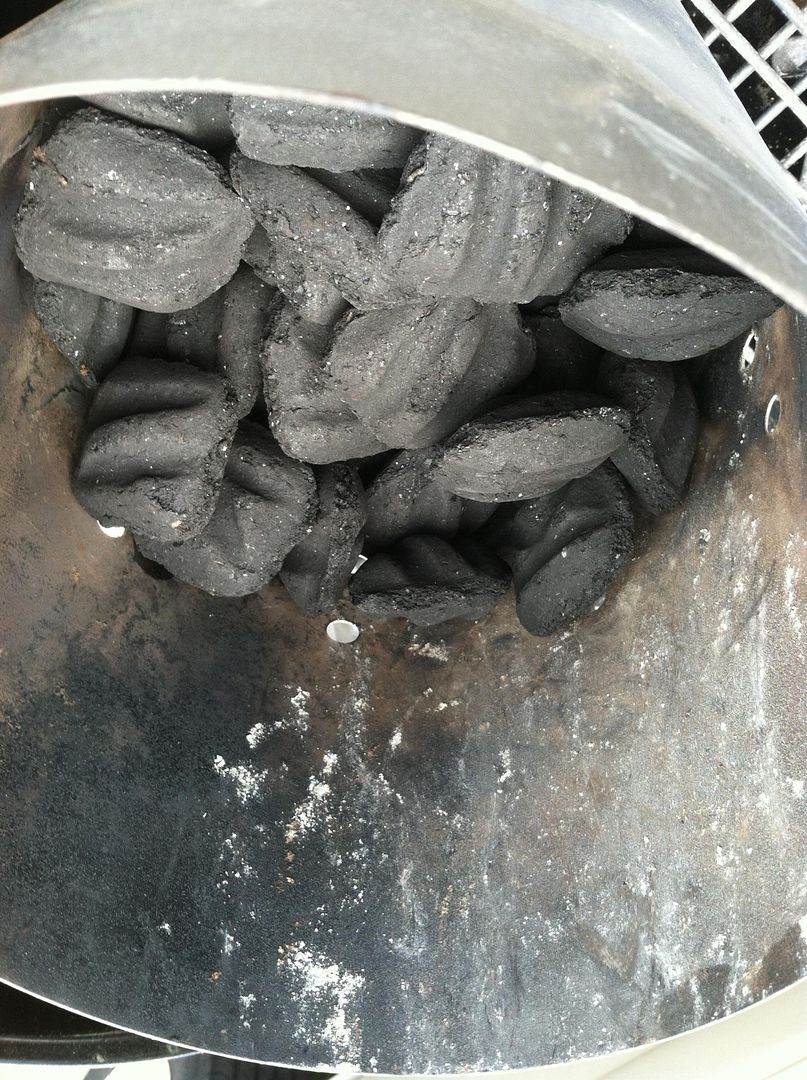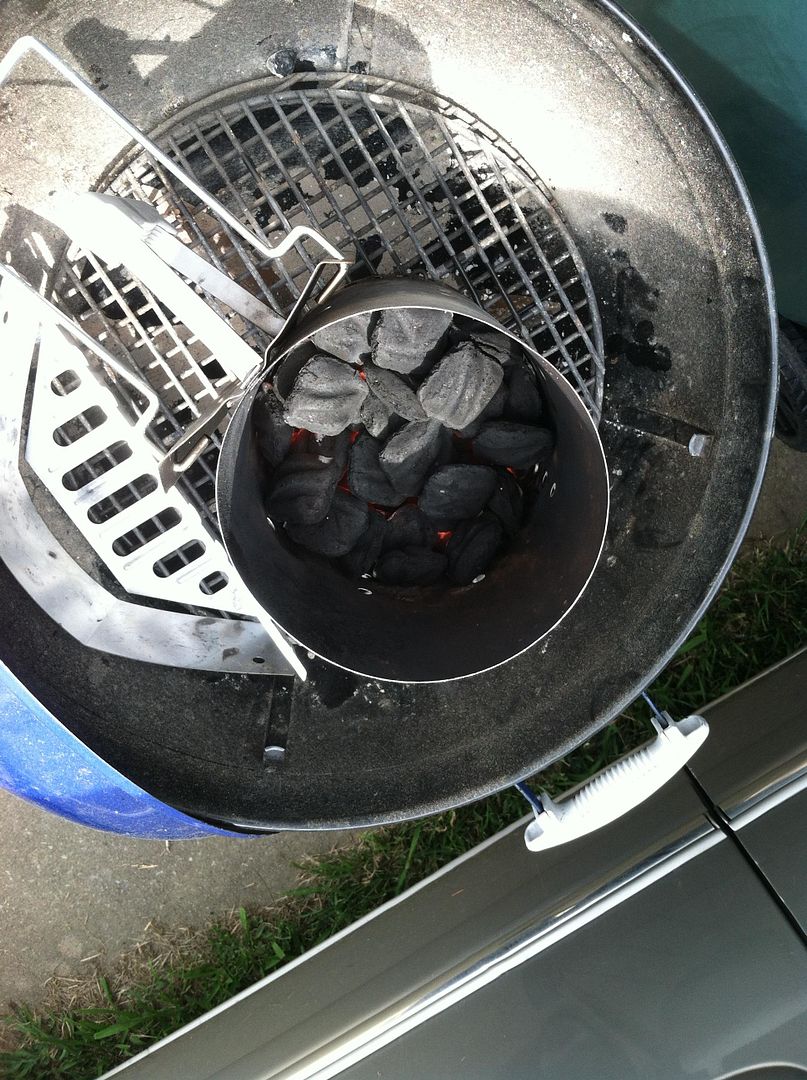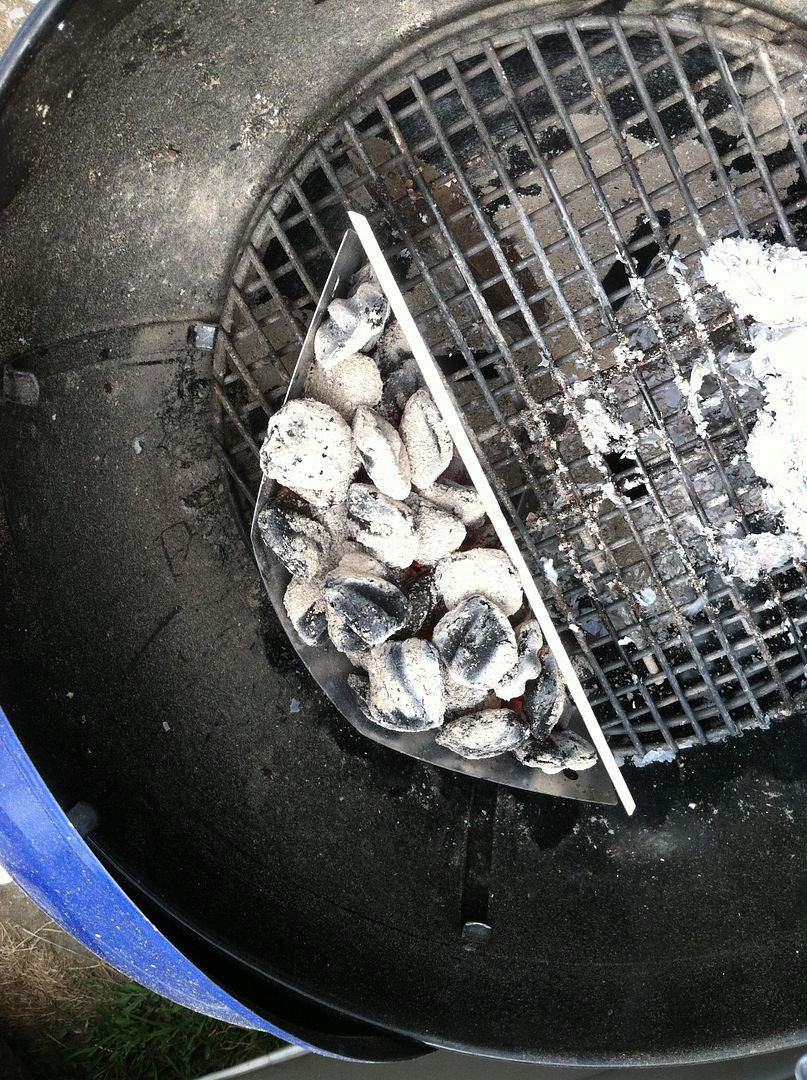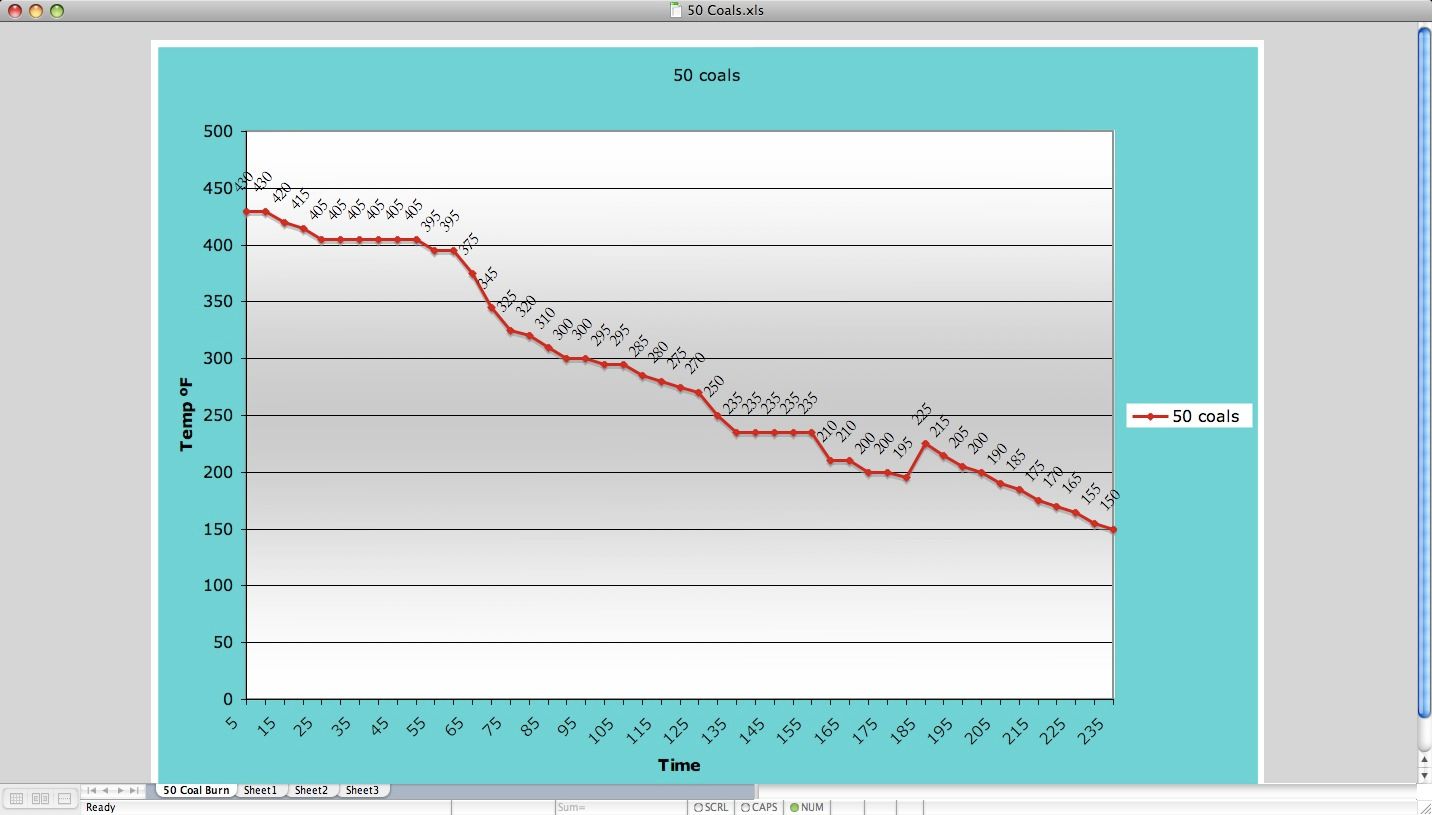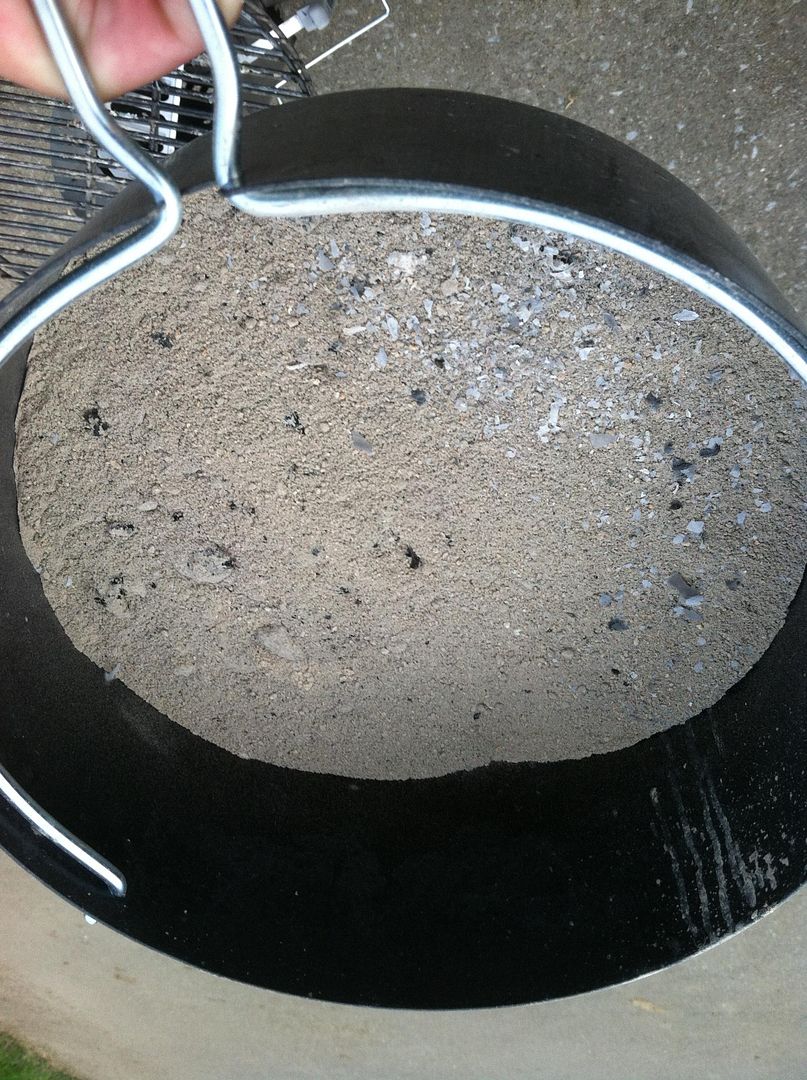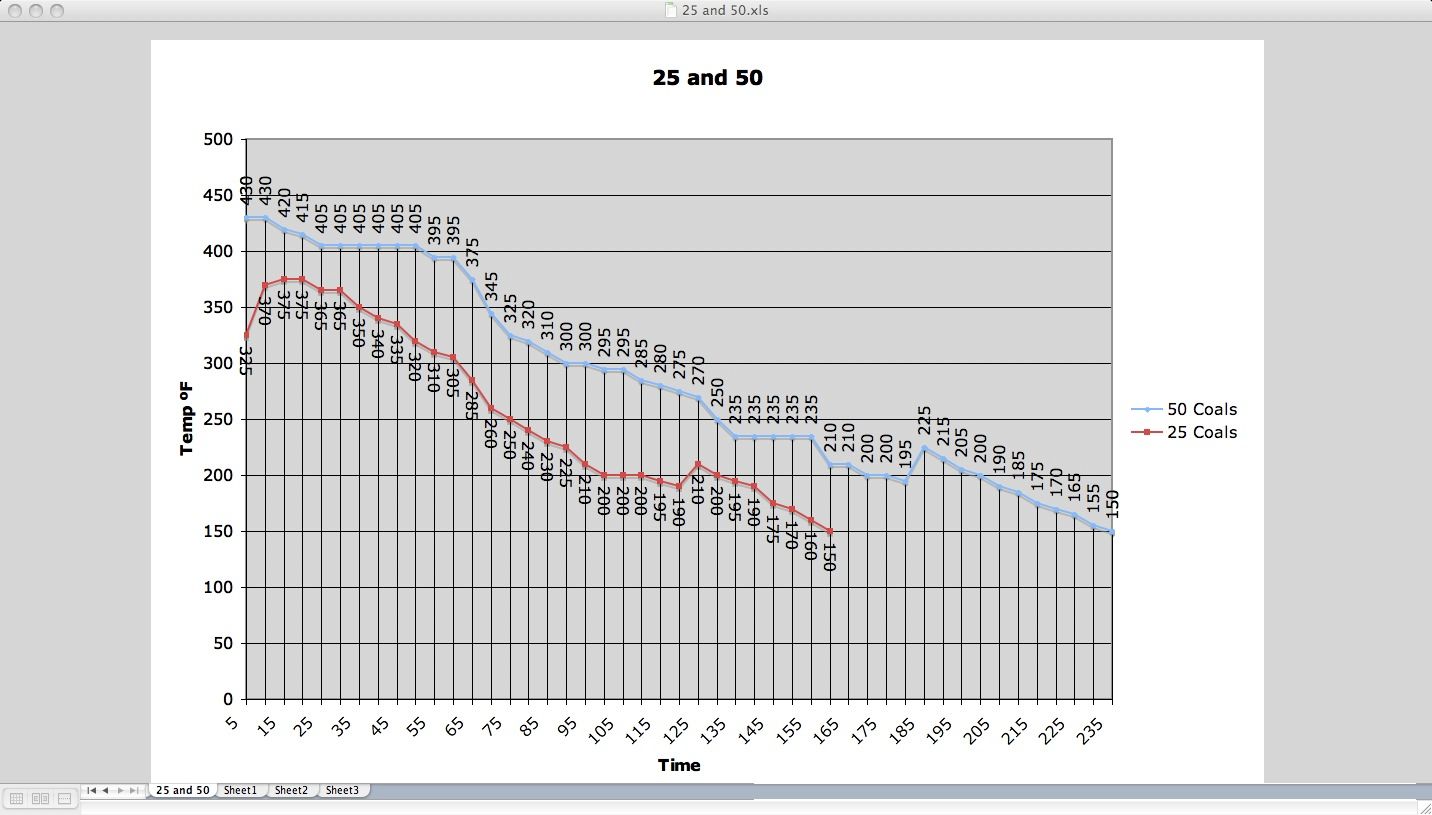ES Reuter
TVWBB Member
Well,
As I posted in my intro I want to learn the in's and outs of fire. Today I took another step in the journey. Though not the first, my first step was the purchase of the grills, then making a 2 zone fire. Which, in my life was never even thought of, even on gas grills, my food was always either over cooked or burnt and raw on the inside. The two zone fire helped me over come that issue.
There are several other things i learned since getting into cooking on live fire much to what i owe here, leaving the food alone, keep the cover on, control air from the bottom, ect.
A big thanks to all the people who post their knowledge and experiences and also to the weber cook books by Jamie Purviance, what a great series eh? lots of good info there for the low man and I am sure there are things in there for the big man too.
I set out today to answer some questions I have with briquettes for a fuel source.
How many briquettes will get you what temp? There seems to be a great deal of info about lump charcoal on the naked whiz. Also I recall reading here about the difference of lump and Kingsford Blue, but I have not run across a chart or comparison about how many briquettes will give you what temp. If you the reader know of a deal of info please share, though i still want to burn and learn
So i decided to undertake this little venture and share it with all, even though many of you already know this, its for my sake too.
The experiment over all, burn a selected amount of whole briquettes and measure internal grill temps.
method:
measure time from lighting the paper in the chimney until grill reaches internal temp of 150ºf
Take temp reading every 5 mins
run the kettle with wide open vents, top and bottom.
never lift the lid until under 150ºf
shake ashes off and sweep at 60mins and 120mins into burn.
vents opposite fire
coals placed in char baskets
temp reading at 1.5" above grate
the variables:
as we all know there are too many variables to contend with when grilling in the real world. wind speed, humidity, sunshine placement of kettle.
for these elements we have to just give in to nature and label the out come of this experiment as a guide line and not exact data.
I will record a variable if it is very strong, such as a nasty wind, it started raining, large temp drop ect.
keeping consistent, as we all know the way to test and prove something is to only change one variable at a time. for the next few fires we will only change the number of coals for the burn. Everything else i will do my best to recreate it exactly as before, IE, placement of the basket, the vents, same thermo in the same place. you get the idea.
tools:
paper and clipbaord
iphone
6" bimetal thermo
i think that about sums up everything.
Enough with the talking, now the doing.
lets begin shall we,
Ahhhh, the way it should be every day. Cooking on the left and experimenting on the right.
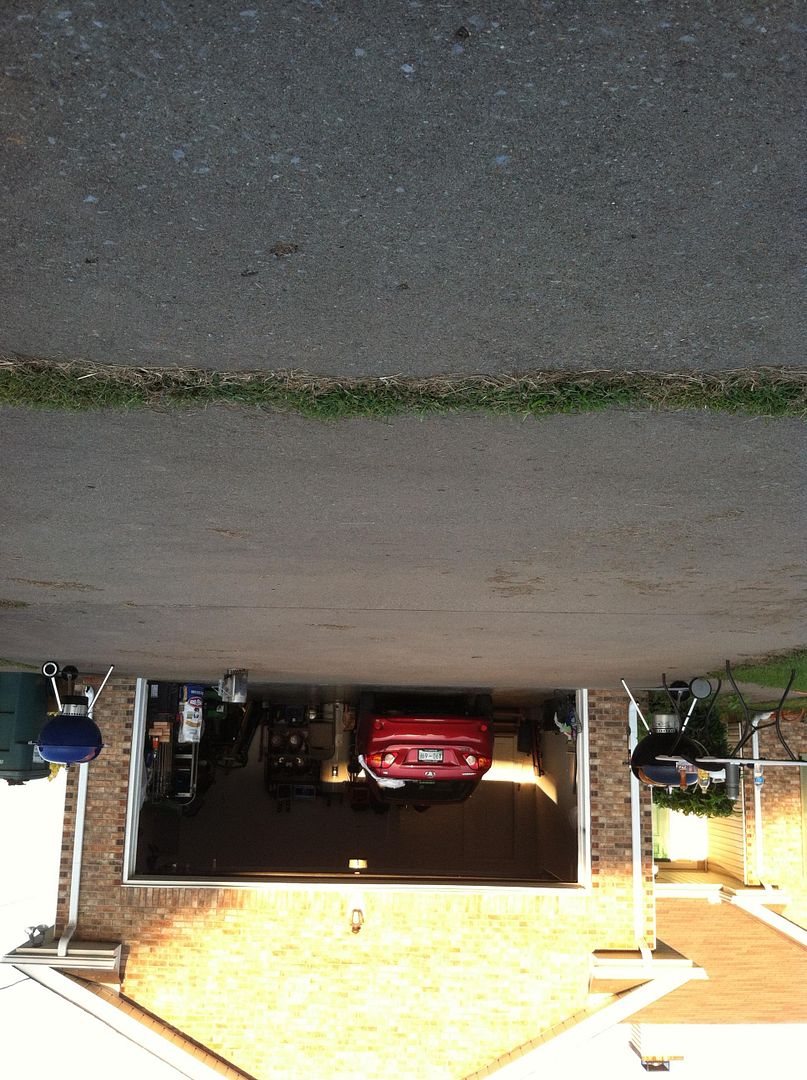
Todays burn was 25 KB in my 22.5 kettle, coals in a char basket, vents open and top vent opposite the fire.
I was going to follow the instructions on the bag and have the coals in the chimney for 15 mins how ever after looking at the coals in the chimney it took only 6 minutes to get these coals red hot and the top few were red and grey. I had to scrub the idea that i would burn all the coals in the chimney for the same amount of time. Since this ignite took only 6 minutes to dump the coals i will estimate when i do 50 coals it will take about 12 mins but we will see when i do that burn.
my 6 minute figure come from when the paper in the bottom of the chimney caught fire to when i dumped them into the basket. not to much to comment on, looking into the chimney 25 coals is about 1/4 just enough to cover the wire support on the bottom. i had figured the coals would ignite fast, i was right.
this is immediately after i dumped the coals from the chimney there are 25 coals from paper ignition to dumping was a total of 6mins, then the cover was placed on the grill and the probe inserted
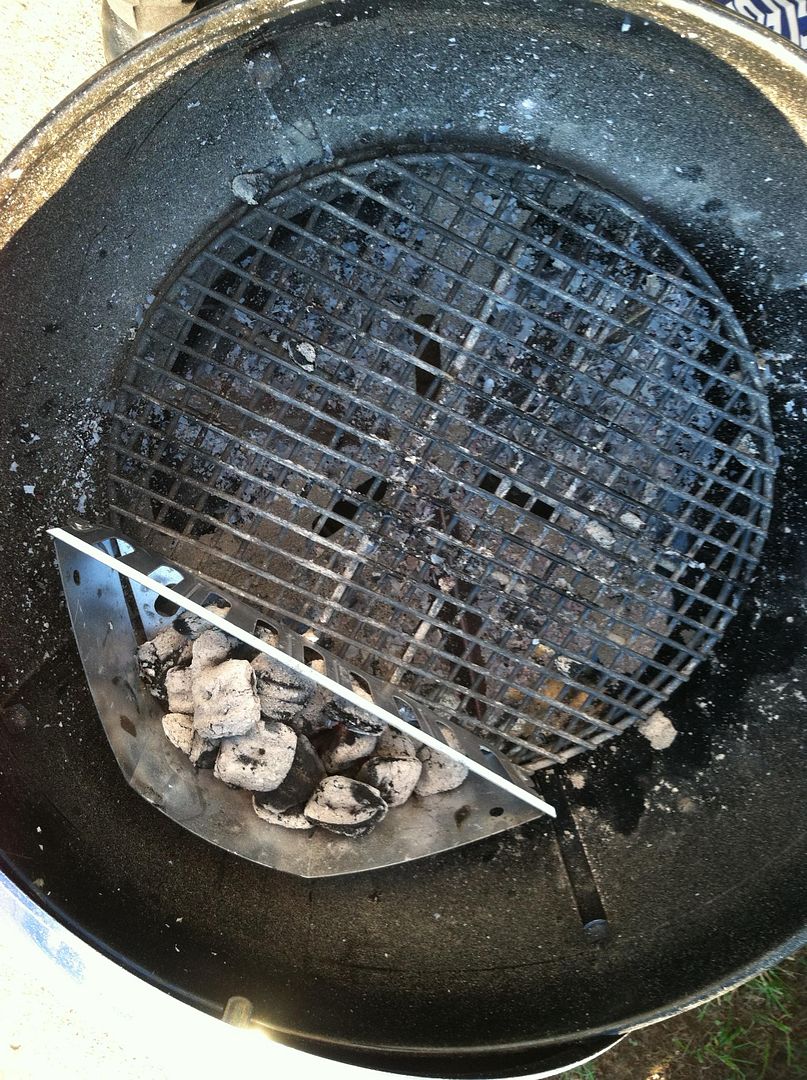
we are off! the learning run is off to the races
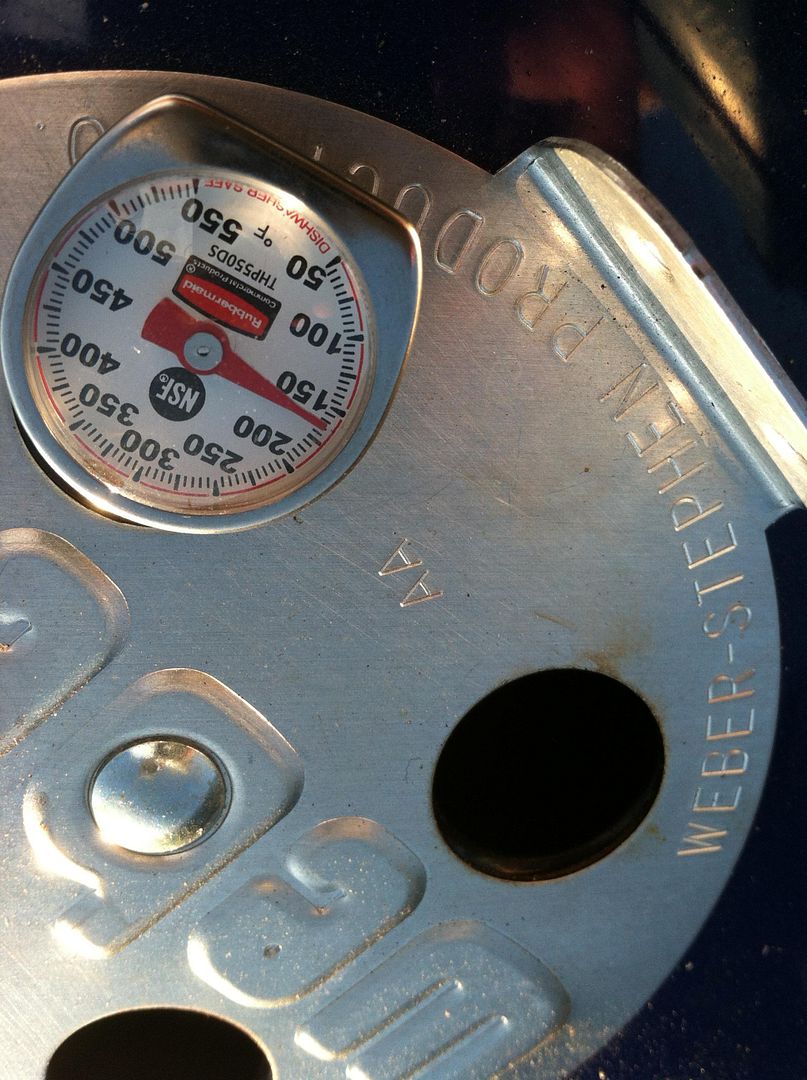
i decided to take a temp reading every 5 mins until the fire goes out. i chose this number simply because it would afford me the data to make a good chart afterwards.
some may say you need a digital thermo, to that i say, hold on, ill get there. Also, i tested the therm for accuracy in boiling water and its fine, on the mark.
plus as before we have to strive for general ideas here, as we can not control all the variables involved.
lets take a look at the chart
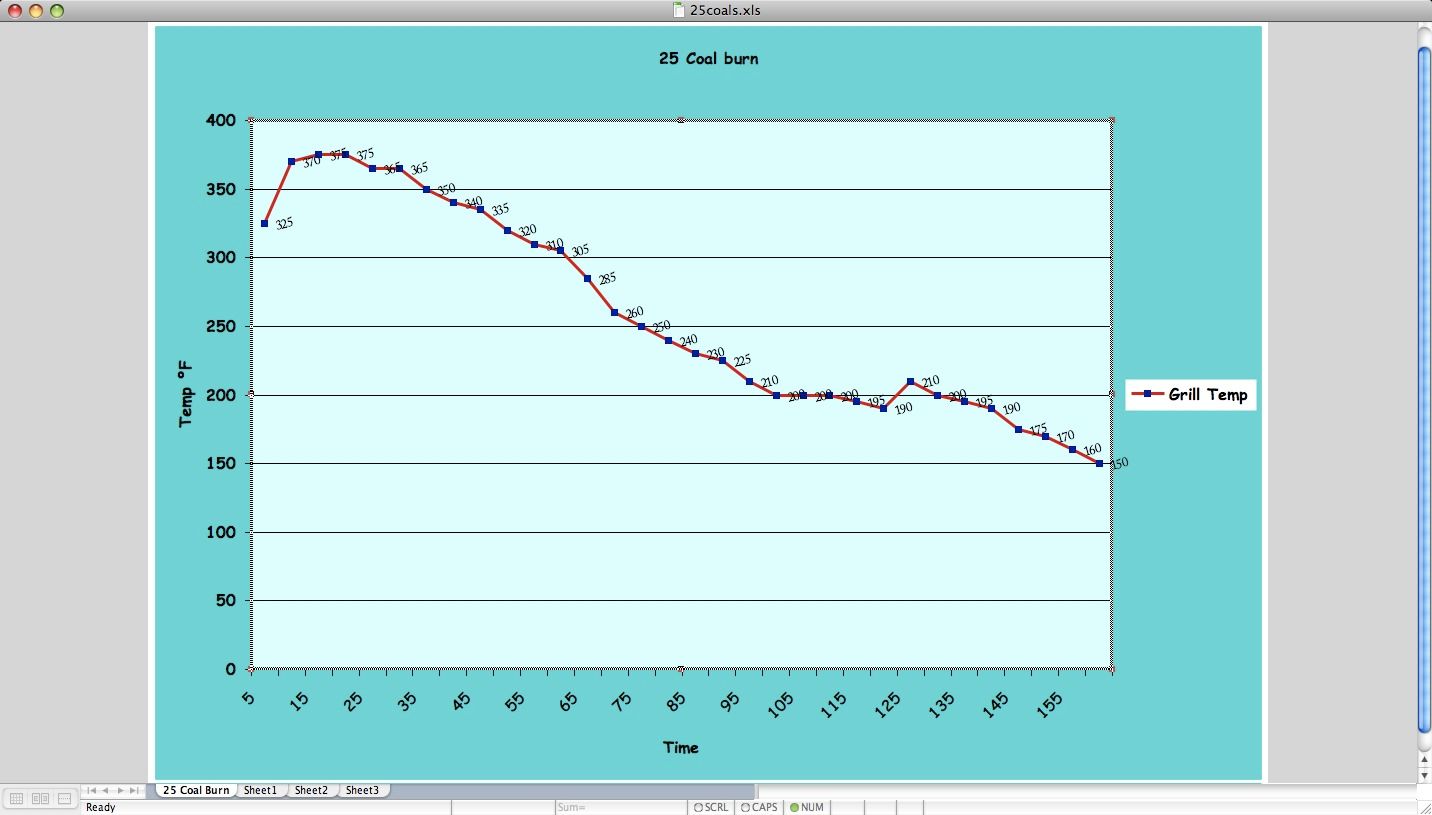
whew, well lots to talk about here.
first off i am happy, because my chart resembles other charts on burning charcoal and temps. since the ignition and the peak it is all down hill. As expected, the curve is true of a characteristic of a fire.
second observation is that KB under these conditions, has two plateaus, a peak internal temp of 375 for 10mins and then again at 200 for 15mins.
after looking at the temps and the times they stay there 25 coals is not really optimal for cooking indirectly, some things may work but burgers and other longer cooking item will not stay at proper temp long enough to be cooked safely.
another observation i made is, the hotter the fire the larger the fall in temp during temp taking intervals. the trend from a new hot fire dying out it typically loses ~15 degrees every 5mins.
the opposite is true during end of the fires life, at roughly 215 the temp drops change to about 5 degrees every 5 mins.
this phenomena intrigued me o at the lower temps i placed my had over the lid vent and noticed the amount of heat pouring out was drastically reduced as was the air flow. I have noticed several other times and while cooking with my 26 at hotter temps the air actually rushes out of the kettle.
I figure that this balance in temp is because of kettle design and weather inside the kettle. In this point of the fires life all the heat it pours out is almost dissipated by the environment in the kettle therefore creating balanced pressure in the kettle and in the atmosphere i live in.
this balance also slows airflow, with low air flow fire runs cooler thus kettle runs cooler, but there is enough draw to maintain the fire for longer periods. I believe the opposite is true with high temp younger fires, they are burning so hot and the pressure in the kettle is so great that air is being pushed out and sucked in aggressively thus feeding the fire and making it hot hot hot.
now, all that jazz you just read is my observation. I might be way off in my ideas, please correct me if i am wrong.
another observation i had was a shock. As with other charts out there many have reported a spike in temps after ashes are knocked off the coals. I did a knock and a sweep of the one touch system at 60mins and 120 mins. I stirred and swept after i took the reading so the temp change is reflected in the next 5 mins reading. 65mins and 125 mins respectively. The way i stirred the coals with out lifting the lid was dropping the front leg down on the ground a few times, it worked out fine and allowed me to never lift the lid.
the shock i had was at 60mins there was no real change after the knock and sweep in the temp only a slow down in the cooling of the fire occurred at 60 and 65 mins, going from 310 to 305, breaking the 10~15 degree decline. i can only suspect that having only 25 coals at this time in the burn they were pretty spread apart before i stirred them and cleaned the bowl so there really wasn't much of a change in the coal size and relation to each other.
it was at the 120 mins when i shook the coals again, and again with out lifting the lid off the bowl, that a temp spike occurred. this time i looked into the holes to see what was burning, the size and if they were still in a pile or all spread out.
here is the best shot i could muster thru the vents:
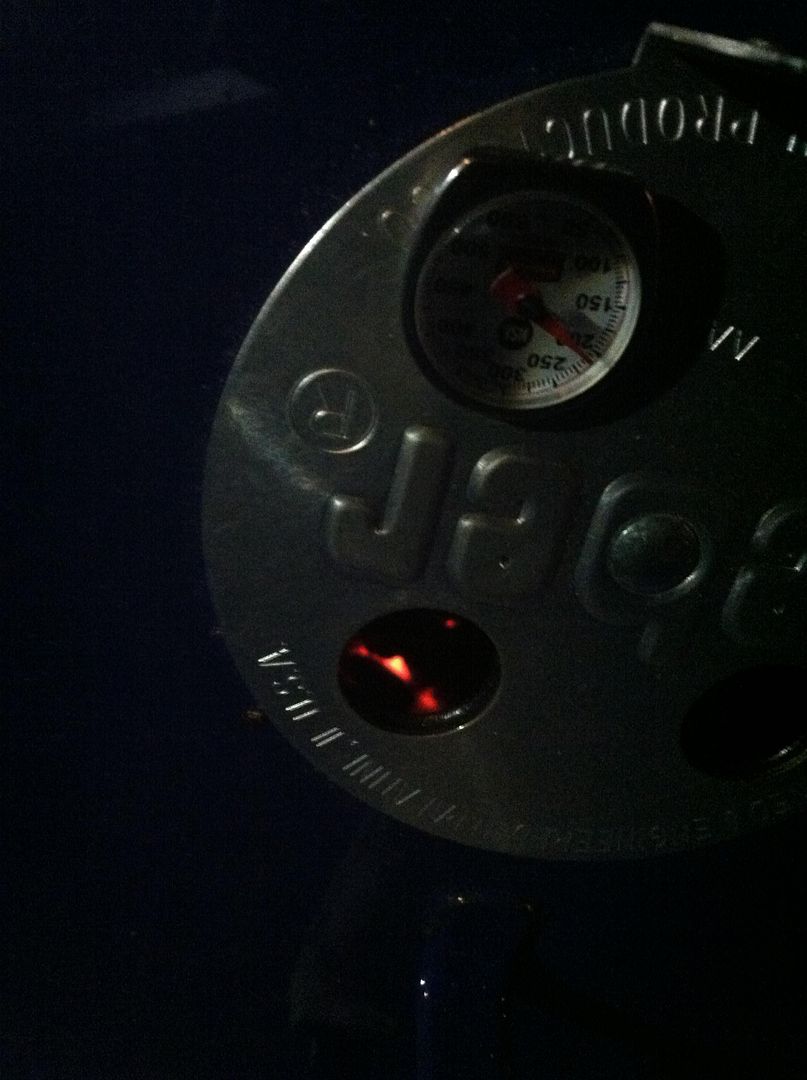
I could see that the coals were still piled together, though much much smaller with the ash knocked off they did receive more o2 and thus created a temp spike in the end of the fires life.
this little burn has raised many questions in my mind. when i burn 50 coals i am curious to see if there is a temp spike at the 60 mins mark as there will be 2 times the coals and ash.
will the fire burn for 4 hours? though i think not, most other research and kingsford themselves say you get about an hour to hour and a half out of a chimney.
another thought i had but not to change more than one variable, is when the coals are in the basket and clumped together they may burn a little cooler but do they burn longer at temp x?
these will be some things i will look into in future burns.
so finally here we are at the 150 mark. 160 mins from match light, i laughed as the temp in the kettle was still above the safe holding temp.
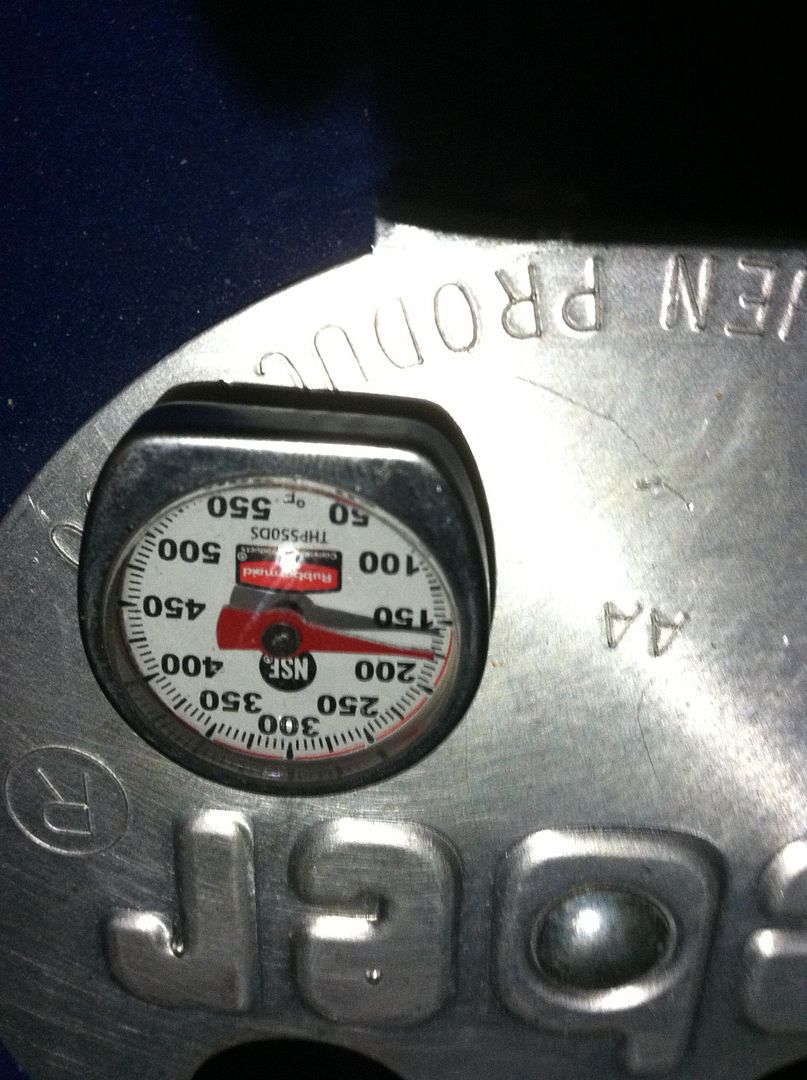
after a 160 min burn the coals were pretty much gone i think its safe to say that if you want to burn your coals to a safe put away temp it will take 3 hours. though there are a few coals with a little glow.
here is the coals in the basket after i opened the lid at 150 at the end of my burn.
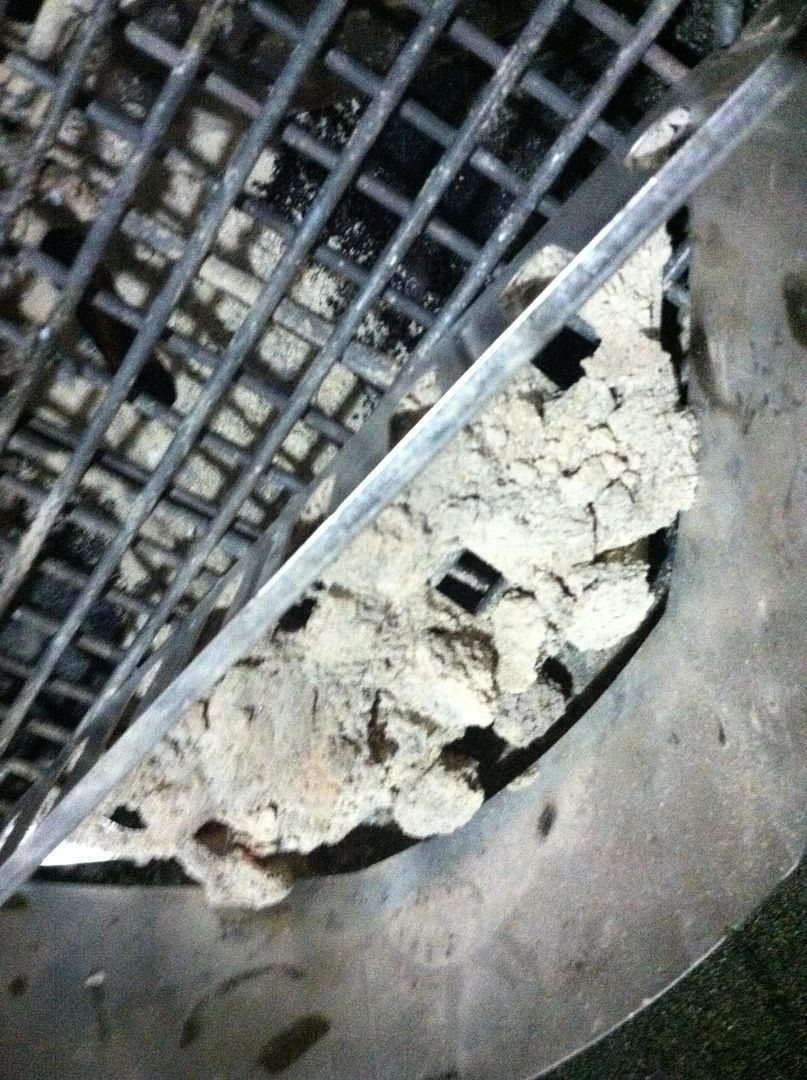
i dumped the baskets out and here is the still lit embers
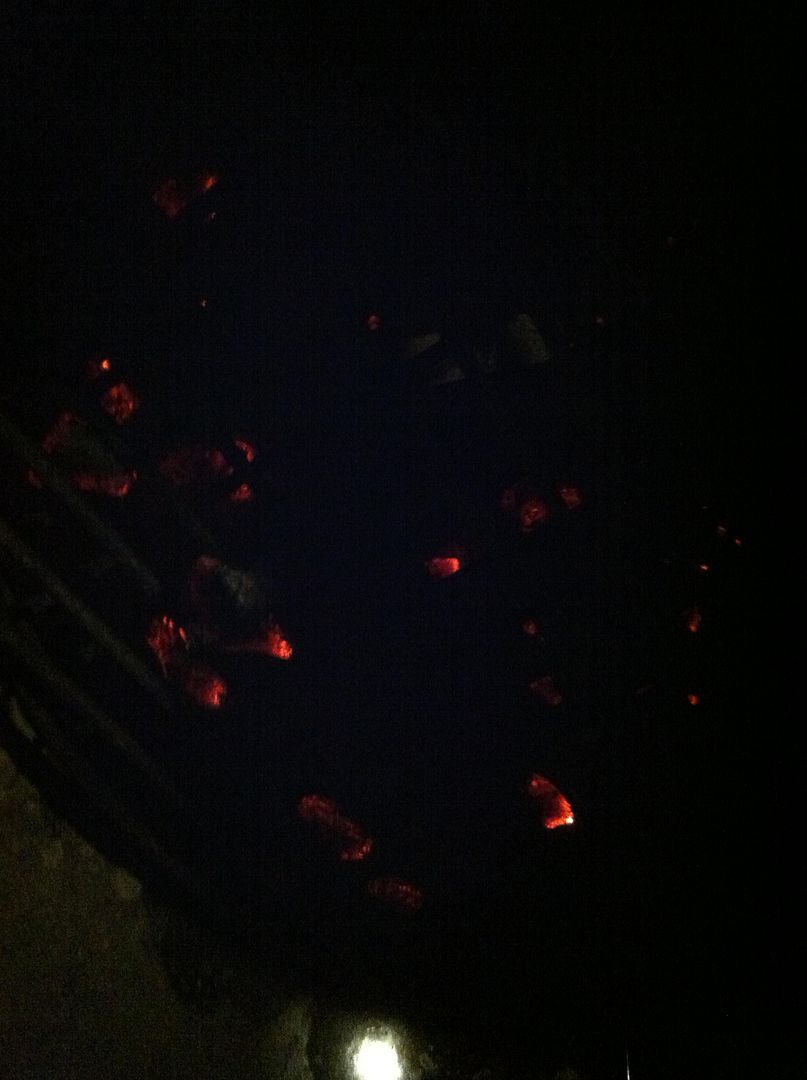
and again in the light so you can see whos who
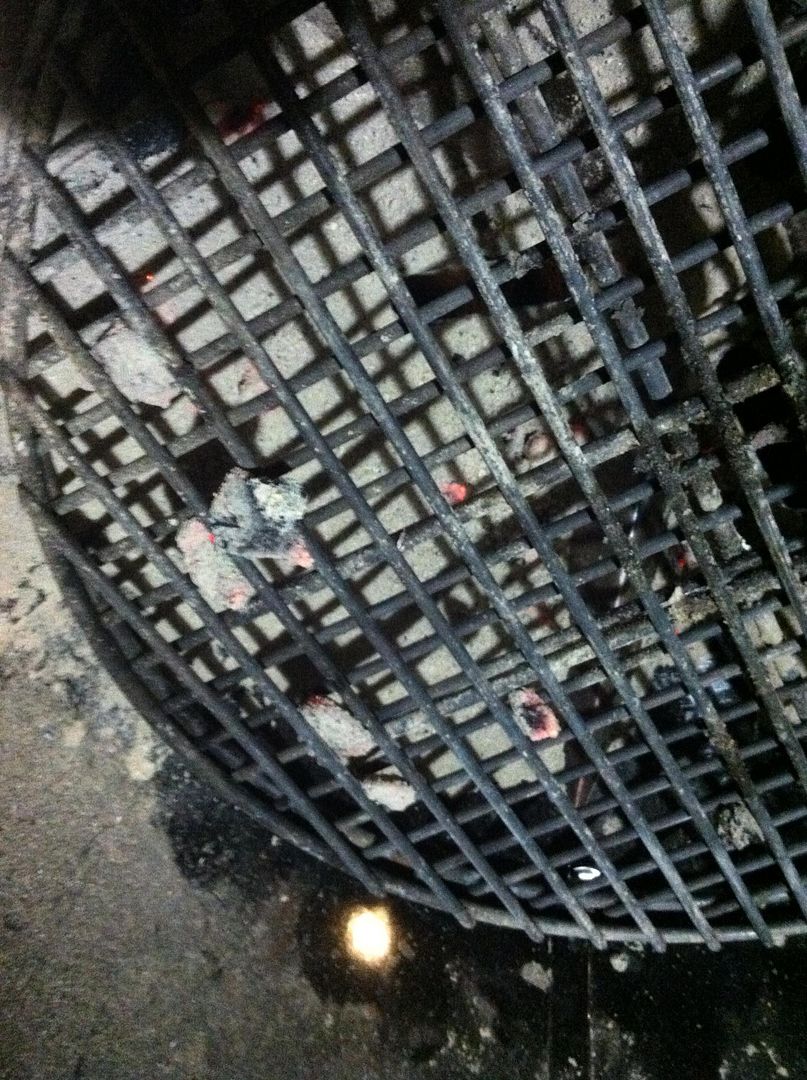
As I posted in my intro I want to learn the in's and outs of fire. Today I took another step in the journey. Though not the first, my first step was the purchase of the grills, then making a 2 zone fire. Which, in my life was never even thought of, even on gas grills, my food was always either over cooked or burnt and raw on the inside. The two zone fire helped me over come that issue.
There are several other things i learned since getting into cooking on live fire much to what i owe here, leaving the food alone, keep the cover on, control air from the bottom, ect.
A big thanks to all the people who post their knowledge and experiences and also to the weber cook books by Jamie Purviance, what a great series eh? lots of good info there for the low man and I am sure there are things in there for the big man too.
I set out today to answer some questions I have with briquettes for a fuel source.
How many briquettes will get you what temp? There seems to be a great deal of info about lump charcoal on the naked whiz. Also I recall reading here about the difference of lump and Kingsford Blue, but I have not run across a chart or comparison about how many briquettes will give you what temp. If you the reader know of a deal of info please share, though i still want to burn and learn
So i decided to undertake this little venture and share it with all, even though many of you already know this, its for my sake too.
The experiment over all, burn a selected amount of whole briquettes and measure internal grill temps.
method:
measure time from lighting the paper in the chimney until grill reaches internal temp of 150ºf
Take temp reading every 5 mins
run the kettle with wide open vents, top and bottom.
never lift the lid until under 150ºf
shake ashes off and sweep at 60mins and 120mins into burn.
vents opposite fire
coals placed in char baskets
temp reading at 1.5" above grate
the variables:
as we all know there are too many variables to contend with when grilling in the real world. wind speed, humidity, sunshine placement of kettle.
for these elements we have to just give in to nature and label the out come of this experiment as a guide line and not exact data.
I will record a variable if it is very strong, such as a nasty wind, it started raining, large temp drop ect.
keeping consistent, as we all know the way to test and prove something is to only change one variable at a time. for the next few fires we will only change the number of coals for the burn. Everything else i will do my best to recreate it exactly as before, IE, placement of the basket, the vents, same thermo in the same place. you get the idea.
tools:
paper and clipbaord
iphone
6" bimetal thermo
i think that about sums up everything.
Enough with the talking, now the doing.
lets begin shall we,
Ahhhh, the way it should be every day. Cooking on the left and experimenting on the right.

Todays burn was 25 KB in my 22.5 kettle, coals in a char basket, vents open and top vent opposite the fire.
I was going to follow the instructions on the bag and have the coals in the chimney for 15 mins how ever after looking at the coals in the chimney it took only 6 minutes to get these coals red hot and the top few were red and grey. I had to scrub the idea that i would burn all the coals in the chimney for the same amount of time. Since this ignite took only 6 minutes to dump the coals i will estimate when i do 50 coals it will take about 12 mins but we will see when i do that burn.
my 6 minute figure come from when the paper in the bottom of the chimney caught fire to when i dumped them into the basket. not to much to comment on, looking into the chimney 25 coals is about 1/4 just enough to cover the wire support on the bottom. i had figured the coals would ignite fast, i was right.
this is immediately after i dumped the coals from the chimney there are 25 coals from paper ignition to dumping was a total of 6mins, then the cover was placed on the grill and the probe inserted

we are off! the learning run is off to the races

i decided to take a temp reading every 5 mins until the fire goes out. i chose this number simply because it would afford me the data to make a good chart afterwards.
some may say you need a digital thermo, to that i say, hold on, ill get there. Also, i tested the therm for accuracy in boiling water and its fine, on the mark.
plus as before we have to strive for general ideas here, as we can not control all the variables involved.
lets take a look at the chart

whew, well lots to talk about here.
first off i am happy, because my chart resembles other charts on burning charcoal and temps. since the ignition and the peak it is all down hill. As expected, the curve is true of a characteristic of a fire.
second observation is that KB under these conditions, has two plateaus, a peak internal temp of 375 for 10mins and then again at 200 for 15mins.
after looking at the temps and the times they stay there 25 coals is not really optimal for cooking indirectly, some things may work but burgers and other longer cooking item will not stay at proper temp long enough to be cooked safely.
another observation i made is, the hotter the fire the larger the fall in temp during temp taking intervals. the trend from a new hot fire dying out it typically loses ~15 degrees every 5mins.
the opposite is true during end of the fires life, at roughly 215 the temp drops change to about 5 degrees every 5 mins.
this phenomena intrigued me o at the lower temps i placed my had over the lid vent and noticed the amount of heat pouring out was drastically reduced as was the air flow. I have noticed several other times and while cooking with my 26 at hotter temps the air actually rushes out of the kettle.
I figure that this balance in temp is because of kettle design and weather inside the kettle. In this point of the fires life all the heat it pours out is almost dissipated by the environment in the kettle therefore creating balanced pressure in the kettle and in the atmosphere i live in.
this balance also slows airflow, with low air flow fire runs cooler thus kettle runs cooler, but there is enough draw to maintain the fire for longer periods. I believe the opposite is true with high temp younger fires, they are burning so hot and the pressure in the kettle is so great that air is being pushed out and sucked in aggressively thus feeding the fire and making it hot hot hot.
now, all that jazz you just read is my observation. I might be way off in my ideas, please correct me if i am wrong.
another observation i had was a shock. As with other charts out there many have reported a spike in temps after ashes are knocked off the coals. I did a knock and a sweep of the one touch system at 60mins and 120 mins. I stirred and swept after i took the reading so the temp change is reflected in the next 5 mins reading. 65mins and 125 mins respectively. The way i stirred the coals with out lifting the lid was dropping the front leg down on the ground a few times, it worked out fine and allowed me to never lift the lid.
the shock i had was at 60mins there was no real change after the knock and sweep in the temp only a slow down in the cooling of the fire occurred at 60 and 65 mins, going from 310 to 305, breaking the 10~15 degree decline. i can only suspect that having only 25 coals at this time in the burn they were pretty spread apart before i stirred them and cleaned the bowl so there really wasn't much of a change in the coal size and relation to each other.
it was at the 120 mins when i shook the coals again, and again with out lifting the lid off the bowl, that a temp spike occurred. this time i looked into the holes to see what was burning, the size and if they were still in a pile or all spread out.
here is the best shot i could muster thru the vents:

I could see that the coals were still piled together, though much much smaller with the ash knocked off they did receive more o2 and thus created a temp spike in the end of the fires life.
this little burn has raised many questions in my mind. when i burn 50 coals i am curious to see if there is a temp spike at the 60 mins mark as there will be 2 times the coals and ash.
will the fire burn for 4 hours? though i think not, most other research and kingsford themselves say you get about an hour to hour and a half out of a chimney.
another thought i had but not to change more than one variable, is when the coals are in the basket and clumped together they may burn a little cooler but do they burn longer at temp x?
these will be some things i will look into in future burns.
so finally here we are at the 150 mark. 160 mins from match light, i laughed as the temp in the kettle was still above the safe holding temp.

after a 160 min burn the coals were pretty much gone i think its safe to say that if you want to burn your coals to a safe put away temp it will take 3 hours. though there are a few coals with a little glow.
here is the coals in the basket after i opened the lid at 150 at the end of my burn.

i dumped the baskets out and here is the still lit embers

and again in the light so you can see whos who


